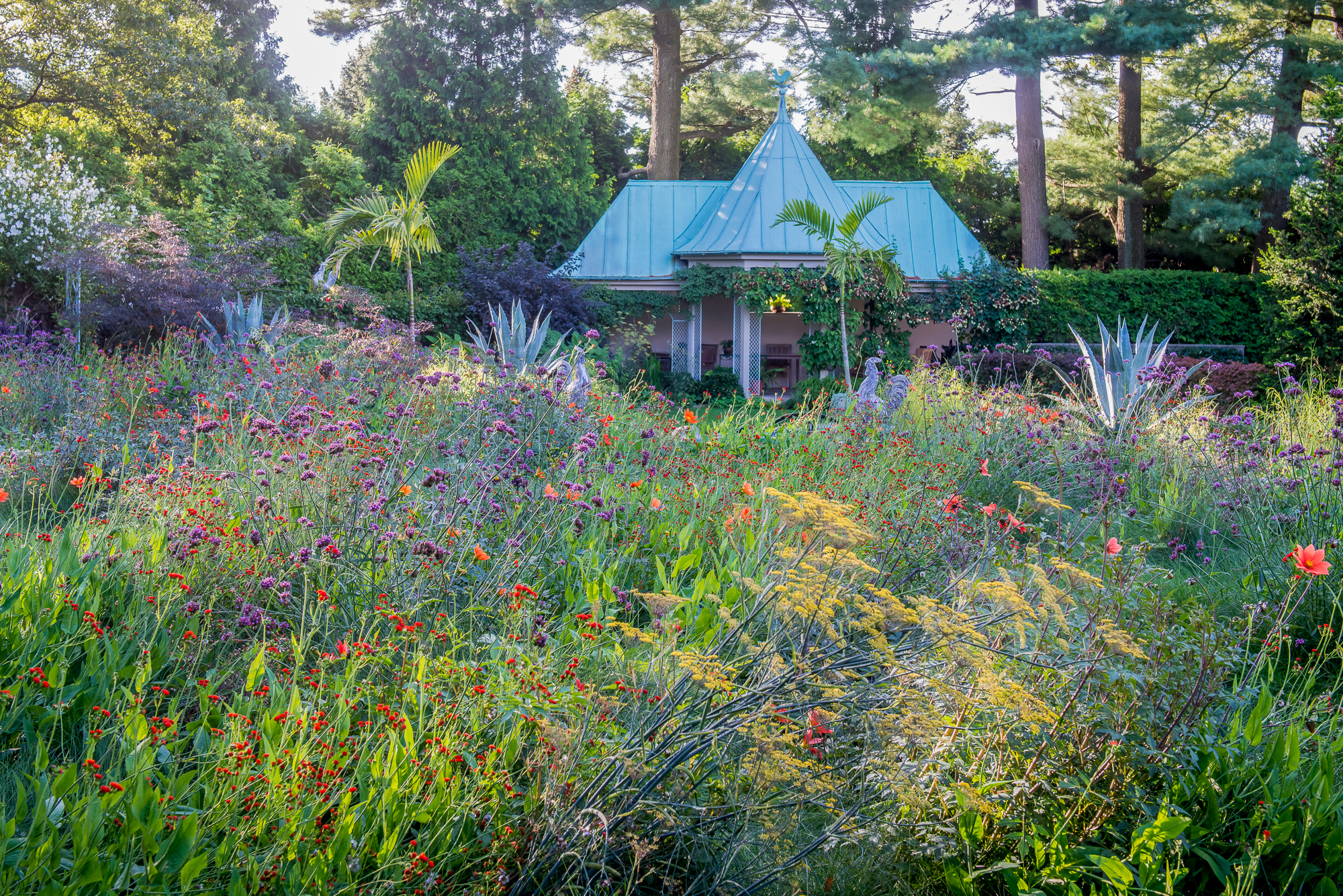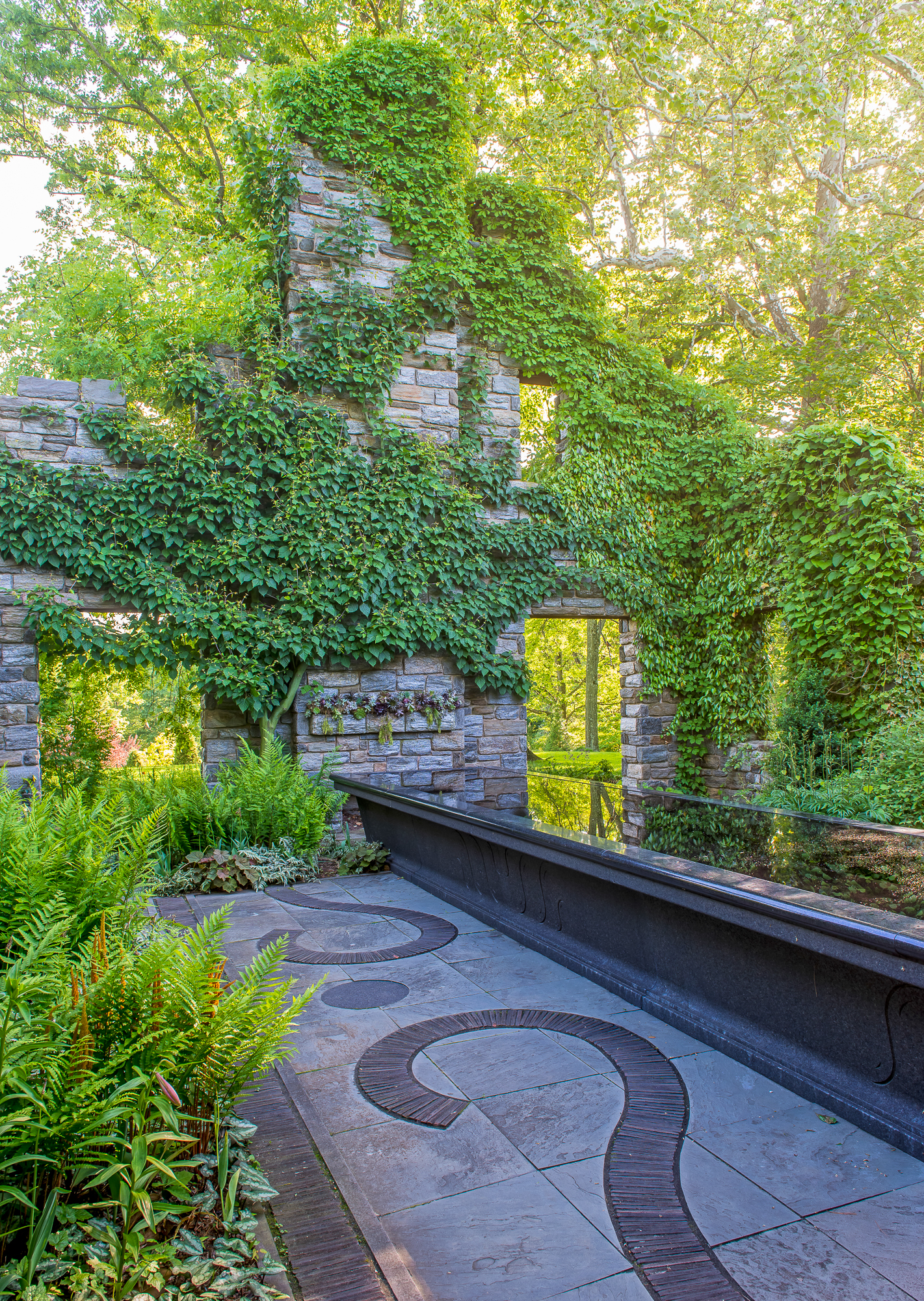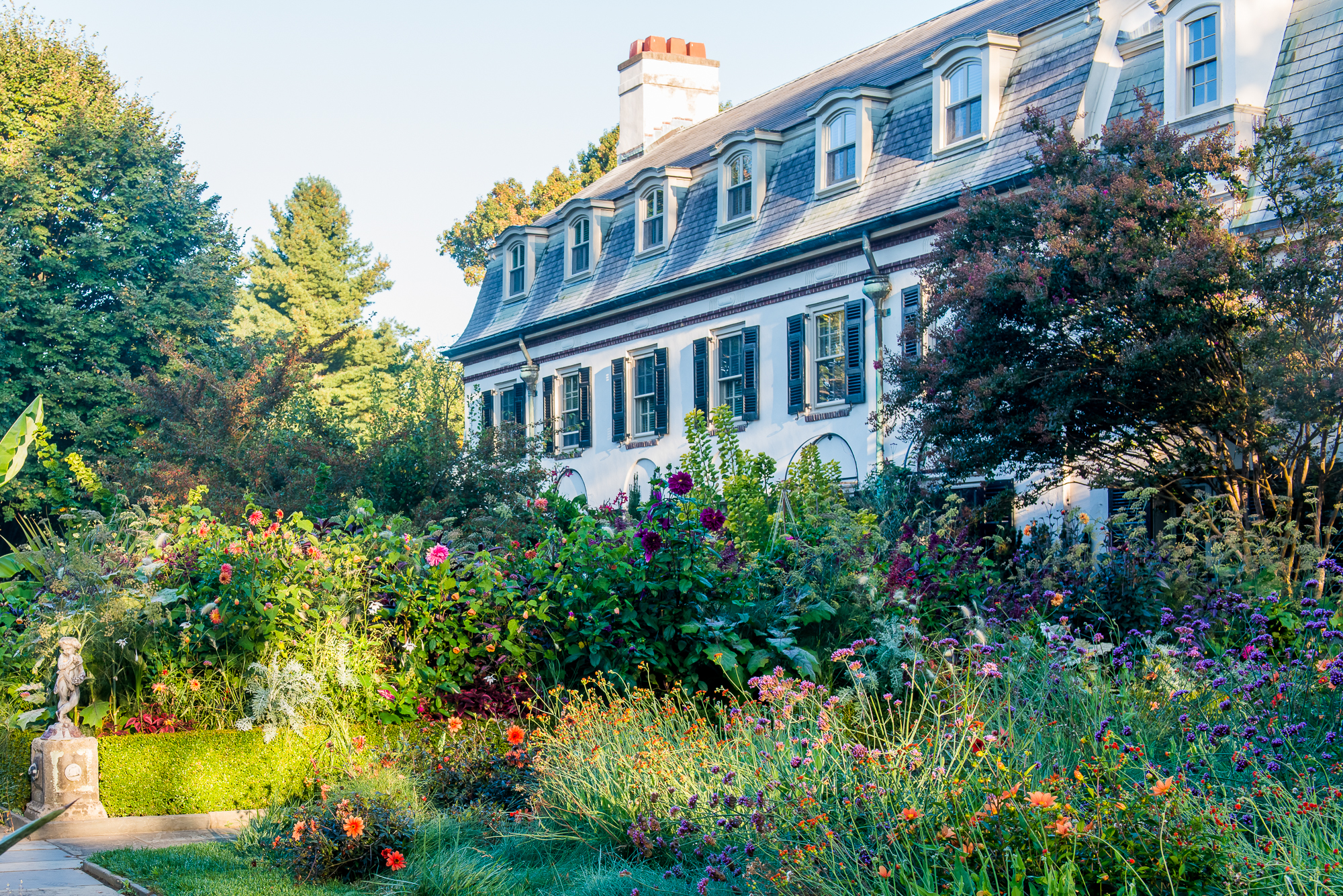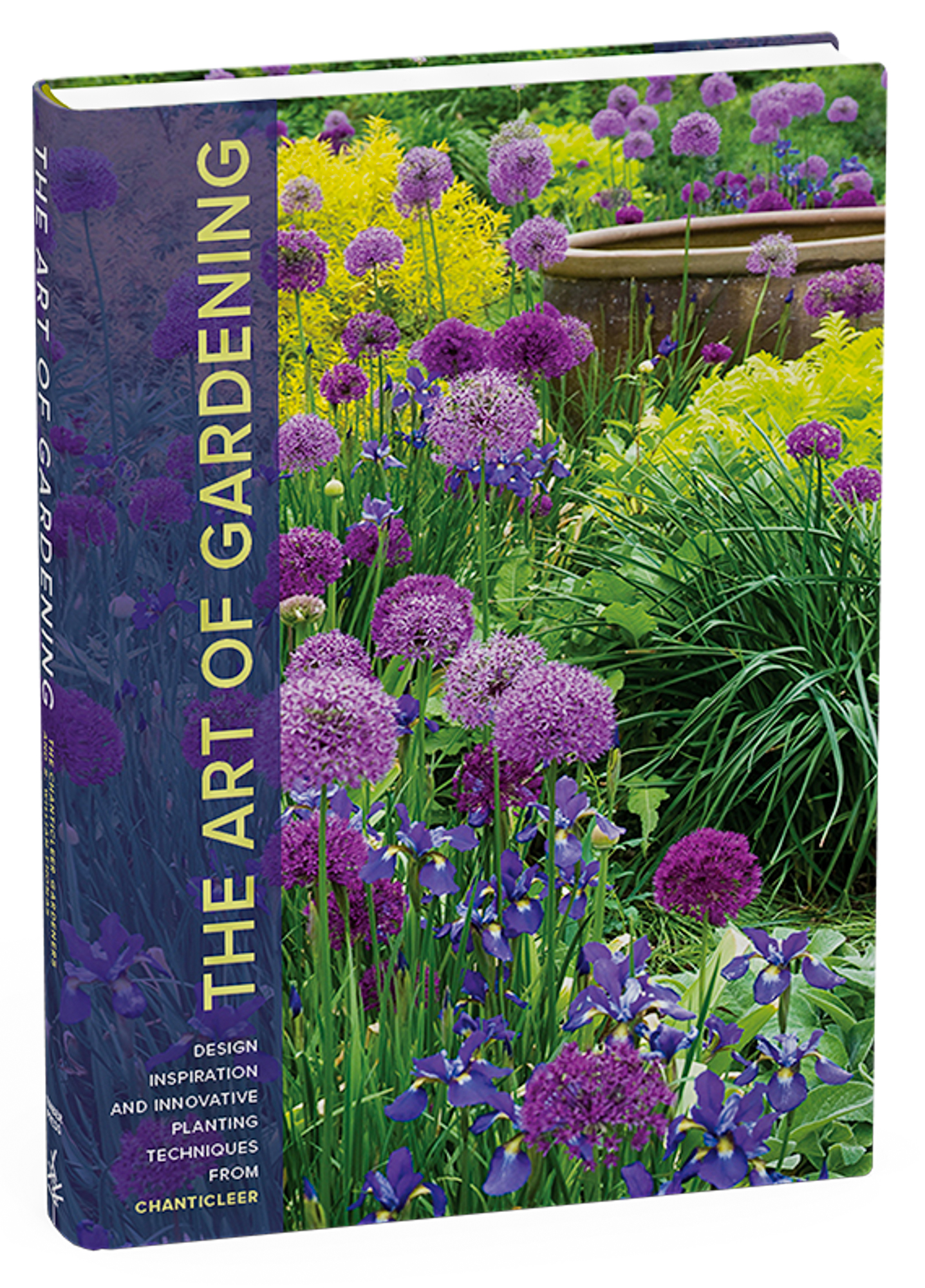A review of "The Art of Gardening: Design Inspiration and Innovative Planting Techniques from Chanticleer" by R. William Thomas and the Chanticleer gardeners
“The entrance to the Chanticleer garden, in a wooded countryside just outside Philadelphia, could be described as a portal into a horticultural parallel universe … The brief is simple: innovate, innovate, innovate. There are more ideas at Chanticleer than any one garden could reasonably be expected to accommodate, and visiting is an intense experience for those with the ability and desire to ‘read’ these plantings.”
- Tim Richardson, Great Gardens of America
....................
“Ten Dahlia ‘Verrone’s Obsidian’, please.”I ordered these beautifully named dahlias immediately after reading The Art of Gardening. When I plant them, they will surely die without some extraordinary intervention.This book is intended to inspire gardener makers and, evidenced by my recent purchase, it does that very well. But The Art of Gardening, written by executive director William Thomas and the garden staff of Chanticleer, and extravagantly illustrated with photographs by Rob Cardillo, perhaps isn’t a book you should read in the worst of winter, at plant ordering time. You too may do unexpected things. I had thought I was immune. You see, I have a naturalistic garden, a wet prairie (I call it) that has never seen such an alien thing as Dahlia. But this book set me thinking. No … when I saw Dahlia ‘Verrone’s Obsidian’ on page 247, I was in the grip of irrational desire induced by a photograph and a memory, a potent duo. Not thought at all.I live not a great distance from Chanticleer and have come to know it rather well. I remember going on a twilight tour led by gardener Jonathan Wright two years ago. And I remember most clearly pausing to admire the colors and varied forms of a virtual wall of dahlias planted at the far end of Chanticleer house, a luxurious collection made to tantalize the dahlia prone. (I didn’t know I was one of those at the time.) Then, just as the sun dropped below the horizon and it became too dark to see clearly, we went behind the house to the Chanticleer Terraces, where Jonathan had done something astonishing. He had replanted what was formerly a lawn with a highly horticultural simulation of a meadow, long turf and flowers, small orange Dahlia coccinea chief among them, mixed in with a small, bright orange Mexican tassel flower called Emilia coccinea, Verbena bonariensis, Bronze fennel, and some other things I’m sure I can’t remember. The word “meadow” usually connotes an informal, relaxed, bucolic image, but this was a highly charged horticultural manifestation, a sophisticated emulation of meadow. Of course no meadow at all … floral magic I’d call it.
I had thought I was immune. You see, I have a naturalistic garden, a wet prairie (I call it) that has never seen such an alien thing as Dahlia. But this book set me thinking. No … when I saw Dahlia ‘Verrone’s Obsidian’ on page 247, I was in the grip of irrational desire induced by a photograph and a memory, a potent duo. Not thought at all.I live not a great distance from Chanticleer and have come to know it rather well. I remember going on a twilight tour led by gardener Jonathan Wright two years ago. And I remember most clearly pausing to admire the colors and varied forms of a virtual wall of dahlias planted at the far end of Chanticleer house, a luxurious collection made to tantalize the dahlia prone. (I didn’t know I was one of those at the time.) Then, just as the sun dropped below the horizon and it became too dark to see clearly, we went behind the house to the Chanticleer Terraces, where Jonathan had done something astonishing. He had replanted what was formerly a lawn with a highly horticultural simulation of a meadow, long turf and flowers, small orange Dahlia coccinea chief among them, mixed in with a small, bright orange Mexican tassel flower called Emilia coccinea, Verbena bonariensis, Bronze fennel, and some other things I’m sure I can’t remember. The word “meadow” usually connotes an informal, relaxed, bucolic image, but this was a highly charged horticultural manifestation, a sophisticated emulation of meadow. Of course no meadow at all … floral magic I’d call it. So this new book on Chanticleer and its meticulous horticultural practices had acted on me as a kind of glorified plant catalogue, appealing to the opposite of my own ecological (not notably horticultural) leanings. I should not have liked Jonathan’s imitation meadow. It violated my principles. But I loved it and have never forgotten it.Admittedly, part of this is plant obsession, a condition I’ve mostly resisted for the past ten years. But far more significant, it is a deeply felt response to the artistry and freedom in which the garden makers of Chanticleer live and work. They each care for their own parts of the garden, and have generous budgets as well as ample access to labor. That some parts of the garden are replanted two or more times each season is no issue. They’re used to it, and they have the resources and energy to do that. A gift of the Rosengarten family through Adolph Rosengarten Jr., the gardener in the family, whose wealth came from a business that became part of Merck, Chanticleer is clearly well endowed, and can support a large staff of seven full-time horticulturists and gardeners, as well as executive director and administrative staff, and grounds management staff.
So this new book on Chanticleer and its meticulous horticultural practices had acted on me as a kind of glorified plant catalogue, appealing to the opposite of my own ecological (not notably horticultural) leanings. I should not have liked Jonathan’s imitation meadow. It violated my principles. But I loved it and have never forgotten it.Admittedly, part of this is plant obsession, a condition I’ve mostly resisted for the past ten years. But far more significant, it is a deeply felt response to the artistry and freedom in which the garden makers of Chanticleer live and work. They each care for their own parts of the garden, and have generous budgets as well as ample access to labor. That some parts of the garden are replanted two or more times each season is no issue. They’re used to it, and they have the resources and energy to do that. A gift of the Rosengarten family through Adolph Rosengarten Jr., the gardener in the family, whose wealth came from a business that became part of Merck, Chanticleer is clearly well endowed, and can support a large staff of seven full-time horticulturists and gardeners, as well as executive director and administrative staff, and grounds management staff. Far more than most public gardens, Chanticleer is able to take risks, and that’s a blessed state to be in these days. Its gardeners are encouraged to take risks, like acrobats, to maintain competitive spirit, hone their skills, explore new plants, creating a garden with continuous interest through all seasons and achieving unique, startling effects.
Far more than most public gardens, Chanticleer is able to take risks, and that’s a blessed state to be in these days. Its gardeners are encouraged to take risks, like acrobats, to maintain competitive spirit, hone their skills, explore new plants, creating a garden with continuous interest through all seasons and achieving unique, startling effects. “Our garden exists to inspire and is filled with ideas to try at home,” Thomas writes. “Chanticleer is our research laboratory where we try new plants, designs, and techniques all in the public view. Our guests see our successes and our failures, although we try to rush the losers to the compost pile. Horticulturist Dan Benarcik calls what we do ‘gardening without a net’. You might want to do the same in your own garden. Try. And try again. Continue what you like. Move on to something else if you are displeased.” This challenging, nigh onto rebellious spirit was established in the garden’s early days when Chris Woods, Chanticleer’s first executive director, proposed the unimaginable: tearing down Adolph Rosengarten Jr.’s house, high on a hill, and replacing it with a grand folly, which today we call the Ruin.
“Our garden exists to inspire and is filled with ideas to try at home,” Thomas writes. “Chanticleer is our research laboratory where we try new plants, designs, and techniques all in the public view. Our guests see our successes and our failures, although we try to rush the losers to the compost pile. Horticulturist Dan Benarcik calls what we do ‘gardening without a net’. You might want to do the same in your own garden. Try. And try again. Continue what you like. Move on to something else if you are displeased.” This challenging, nigh onto rebellious spirit was established in the garden’s early days when Chris Woods, Chanticleer’s first executive director, proposed the unimaginable: tearing down Adolph Rosengarten Jr.’s house, high on a hill, and replacing it with a grand folly, which today we call the Ruin. This new book on Chanticleer will pull you into a garden of delights. Start by looking at Rob Cardillo’s gorgeous photography. Read the captions. Read the text, but not from cover to cover. Browse. Let the photographs pull you in. Though the book is ostensibly divided into only two major sections— Design and Plants—it was a wise and practical decision to break it up into short, easily readable segments, in many different voices.The book itself is a beauty, bound tall and narrow, lavish with appealing and useful photographs. On first viewing it, I had wanted it to be a different book—a large, horizontal format, a coffee table book with huge “fall into me” pictures, but that would have been difficult to use, and this book wants to be used, not put on display. The vertical format works much better for casual browsing. It’s easier to hold for one thing, whether you’re a couch potato, a proper person sitting upright at table, or taking a few minutes of pleasure in bed before dropping off to sleep. As a book that will probably be used as a go-to resource, this format is altogether suitable, almost perfect. I can imagine pulling it off my bookshelf for years to come.In fact, since I finished it, I find myself picking it up repeatedly, wondering, for example, if those beautifully backlit Taxodium disticum var. imbricatum standing straight and lean and so gracefully by the Ruin might work at the back of my garden. This book can fill your day with such moments.
This new book on Chanticleer will pull you into a garden of delights. Start by looking at Rob Cardillo’s gorgeous photography. Read the captions. Read the text, but not from cover to cover. Browse. Let the photographs pull you in. Though the book is ostensibly divided into only two major sections— Design and Plants—it was a wise and practical decision to break it up into short, easily readable segments, in many different voices.The book itself is a beauty, bound tall and narrow, lavish with appealing and useful photographs. On first viewing it, I had wanted it to be a different book—a large, horizontal format, a coffee table book with huge “fall into me” pictures, but that would have been difficult to use, and this book wants to be used, not put on display. The vertical format works much better for casual browsing. It’s easier to hold for one thing, whether you’re a couch potato, a proper person sitting upright at table, or taking a few minutes of pleasure in bed before dropping off to sleep. As a book that will probably be used as a go-to resource, this format is altogether suitable, almost perfect. I can imagine pulling it off my bookshelf for years to come.In fact, since I finished it, I find myself picking it up repeatedly, wondering, for example, if those beautifully backlit Taxodium disticum var. imbricatum standing straight and lean and so gracefully by the Ruin might work at the back of my garden. This book can fill your day with such moments. Located in Wayne, on Philadelphia’s Main Line, so-named because the Main Line of the Pennsylvania Railroad became the home of Philadelphia’s wealthiest families, the area still carries that whiff of well-heeled social prominence we remember from the cinematic antics of Katharine Hepburn in The Philadelphia Story. That is where Chanticleer is.But times have changed and all are welcome now. As the book makes clear, Chanticleer has been successful in maintaining the feeling of a private residence and garden, yet a private garden open to all. Even the entrance is low-key, and the parking lot is a garden too.The book’s subtitle, Design Inspiration and Innovative Planting Techniques from Chanticleer, is accurate, but this is not an easy “how to” instruction book for making a beautiful garden. What Chanticleer does is not “easy.” Their methods are labor-intensive and their horticulture is serious. Yes, you will find an abundance of inspiration here, a plentitude of new ideas you may want to try in your own garden, but you may have to challenge yourself if you hope to achieve similar results.So my takeaway? Where I expected only a paean to a remarkable garden, I found more. The Art of Gardening, though about a garden vastly different from mine, both in appearance and underlying concept, has gotten under my skin, convinced me to try something totally unexpected and likely to fail (the Dahlia ‘Verrone’s Obsidian’ may die). But risk taking is part of the joy of garden making, isn’t it? That’s the point of this book.I’ll be exploring a new horticultural challenge this spring. If you read The Art of Gardening, you may too. I recommend it for your pleasure, your entertainment, and perhaps the betterment of your garden.
Located in Wayne, on Philadelphia’s Main Line, so-named because the Main Line of the Pennsylvania Railroad became the home of Philadelphia’s wealthiest families, the area still carries that whiff of well-heeled social prominence we remember from the cinematic antics of Katharine Hepburn in The Philadelphia Story. That is where Chanticleer is.But times have changed and all are welcome now. As the book makes clear, Chanticleer has been successful in maintaining the feeling of a private residence and garden, yet a private garden open to all. Even the entrance is low-key, and the parking lot is a garden too.The book’s subtitle, Design Inspiration and Innovative Planting Techniques from Chanticleer, is accurate, but this is not an easy “how to” instruction book for making a beautiful garden. What Chanticleer does is not “easy.” Their methods are labor-intensive and their horticulture is serious. Yes, you will find an abundance of inspiration here, a plentitude of new ideas you may want to try in your own garden, but you may have to challenge yourself if you hope to achieve similar results.So my takeaway? Where I expected only a paean to a remarkable garden, I found more. The Art of Gardening, though about a garden vastly different from mine, both in appearance and underlying concept, has gotten under my skin, convinced me to try something totally unexpected and likely to fail (the Dahlia ‘Verrone’s Obsidian’ may die). But risk taking is part of the joy of garden making, isn’t it? That’s the point of this book.I’ll be exploring a new horticultural challenge this spring. If you read The Art of Gardening, you may too. I recommend it for your pleasure, your entertainment, and perhaps the betterment of your garden. Photos taken from The Art of Gardening© Copyright 2015 by the Chanticleer Foundation. Published by Timber Press, Portland, OR. Used by permission of the publisher. All rights reserved.
Photos taken from The Art of Gardening© Copyright 2015 by the Chanticleer Foundation. Published by Timber Press, Portland, OR. Used by permission of the publisher. All rights reserved.
